
|
Fig. 20.1. LED-based approaches for white sources including single-chip and multiple-chip, di-chromatic, tri-chroamtic, and tetra-chromatic approaches.
|
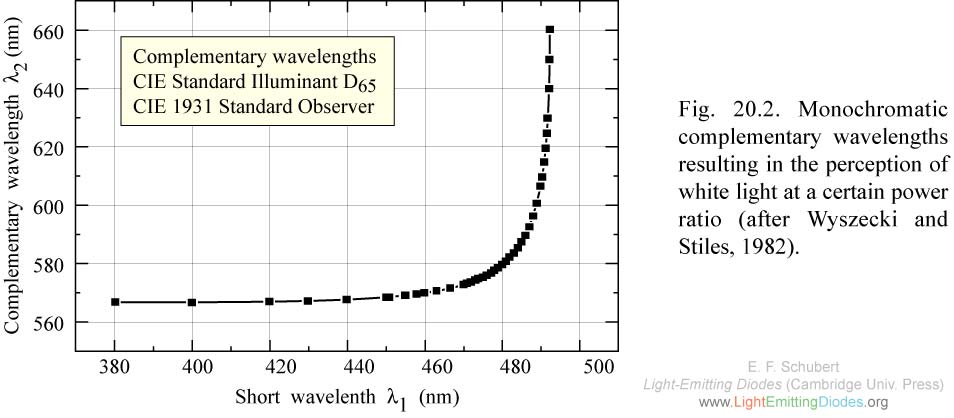
|
Fig. 20.2. Monochromatic complementary wavelengths resulting in the perception of white light at a certain power ratio (after Wyszecki and Stiles, 1982).
|
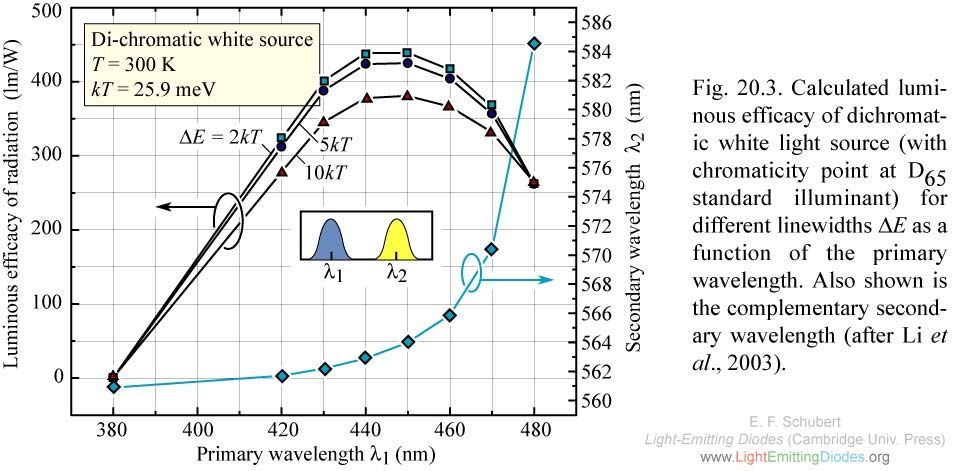
|
Fig. 20.3. Calculated luminous efficacy of dichromatic white light source (with chromaticity point at D65 standard illuminant) for different linewidths Delta E as a function of the primary wavelength. Also shown is the complementary secondary wavelength (after Li et al., 2003).
|
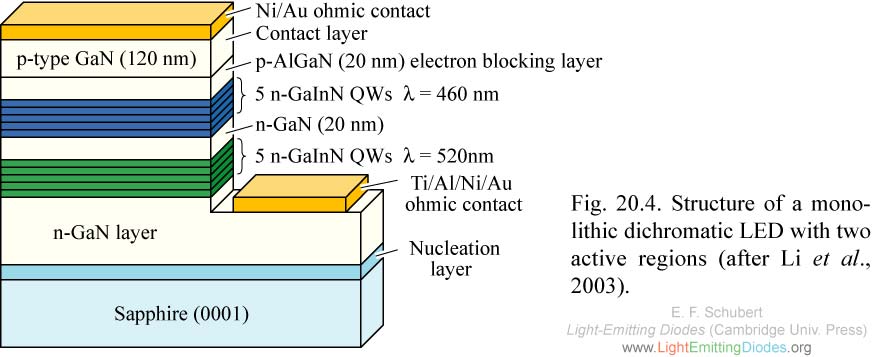
|
Fig. 20.4. Structure of a monolithic dichromatic LED with two active regions (after Li et al., 2003).
|
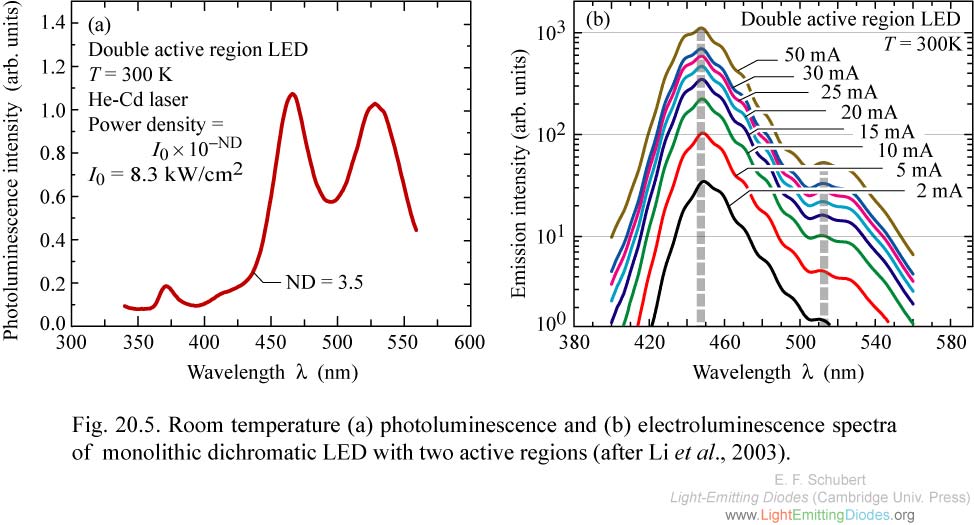
|
Fig. 20.5. Room temperature (a) photoluminescence and (b) electroluminescence spectra of monolithic dichromatic LED with two active regions (after Li et al., 2003).
|
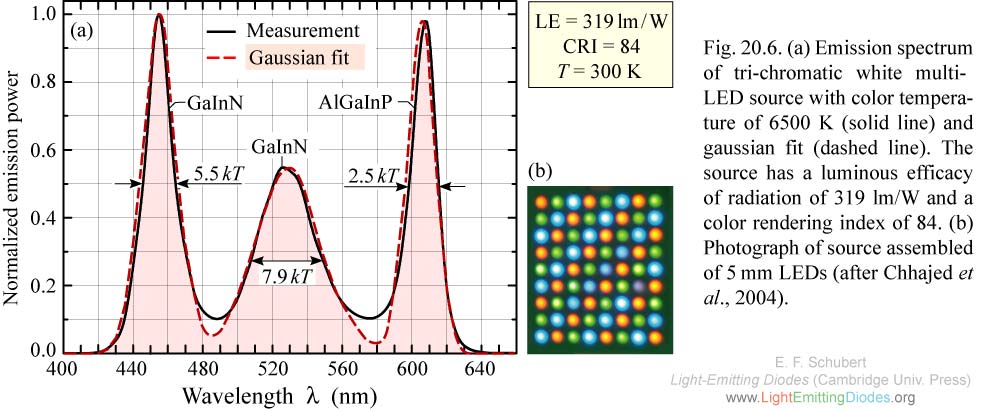
|
Fig. 20.6. (a) Emission spectrum of tri-chromatic white multi-LED source with color temperature of 6500 K (solid line) and gaussian fit (dashed line). The source has a luminous efficacy of radiation of 319 lm/W and a color rendering index of 84. (b) Photograph of source assembled of 5mm LEDs (after Chhajed et al., 2004).
|
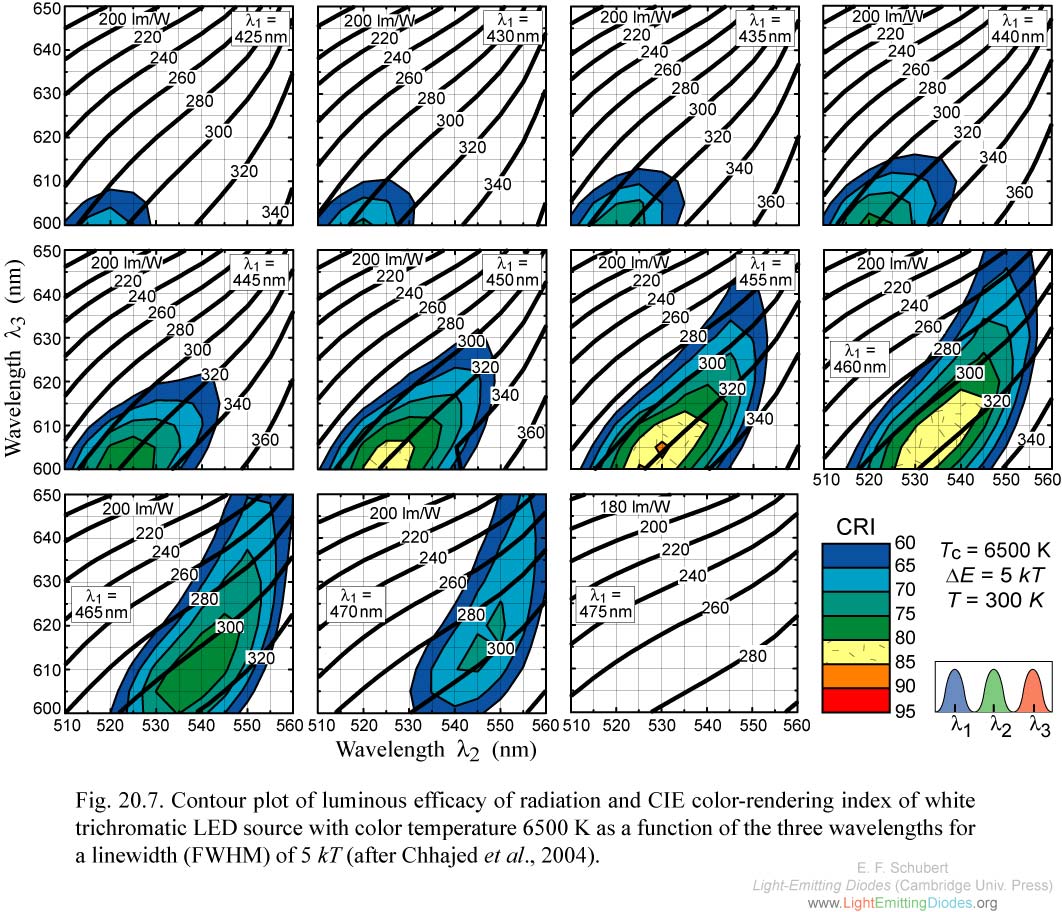
|
Fig. 20.7. Contour plot of luminous efficacy of radiation and CIE color-rendering index of white trichromatic LED source with color temperature 6500 K as a function of the three wavelengths for a linewidth (FWHM) of 5 kT (after Chhajed et al., 2004).
|
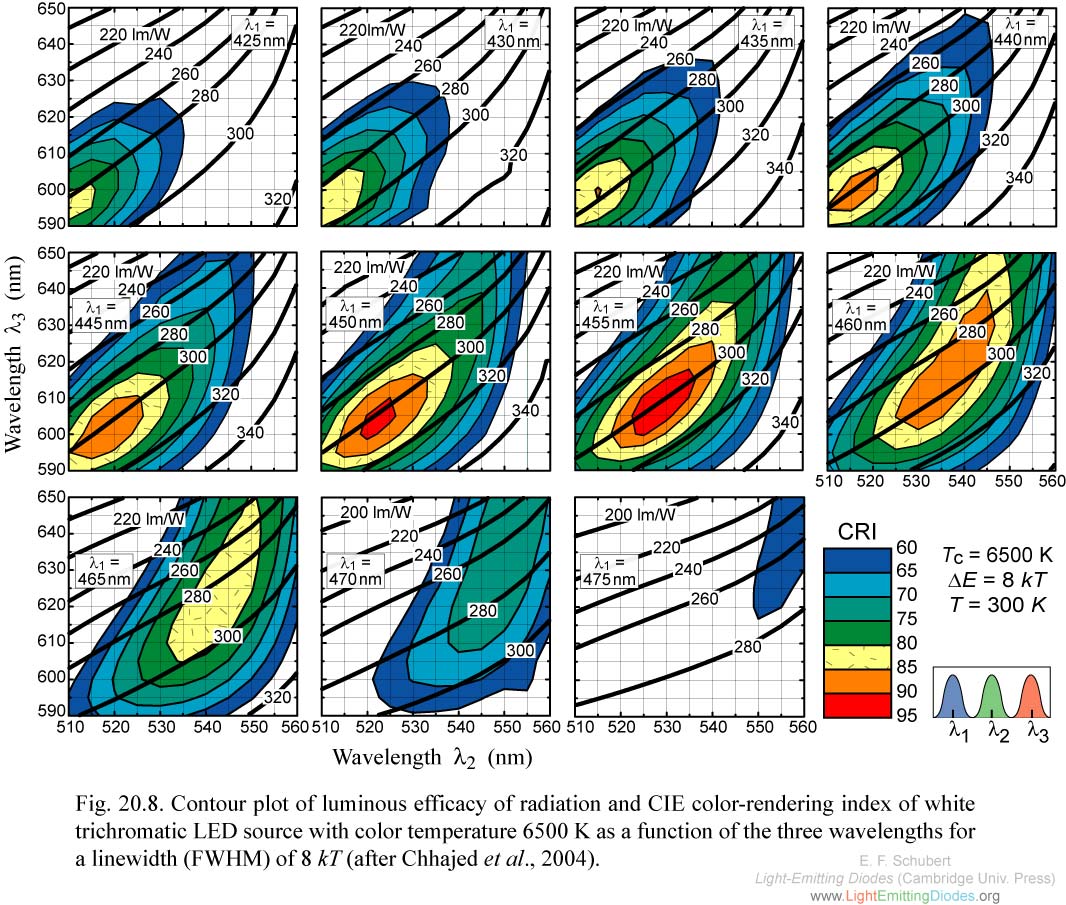
|
Fig. 20.8. Fig. 20.8. Contour plot of luminous efficacy of radiation and CIE color-rendering index of white trichromatic LED source with color temperature 6500 K as a function of the three wavelengths for a linewidth (FWHM) of 8 kT (after Chhajed et al., 2004).
|
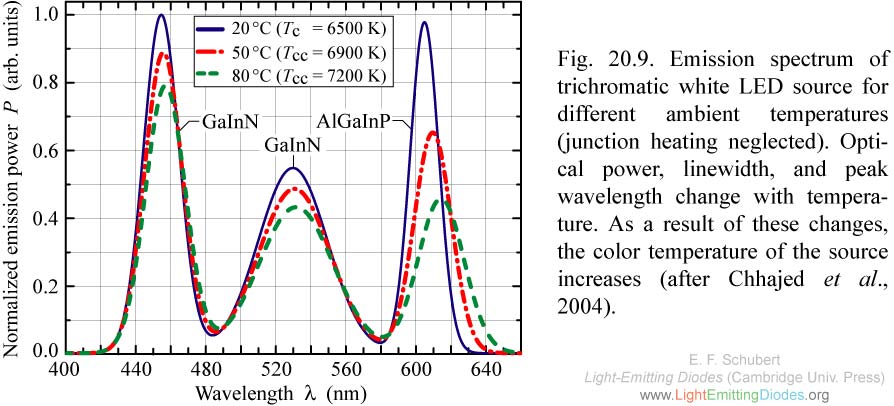
|
Fig. 20.9. Emission spectrum of trichromatic white LED source for different ambient temperatures (junction heating neglected). Optical power, linewidth, and peak wavelength change with temperature. As a result of these changes, the color temperature of the source increases (after Chhajed et al., 2004).
|
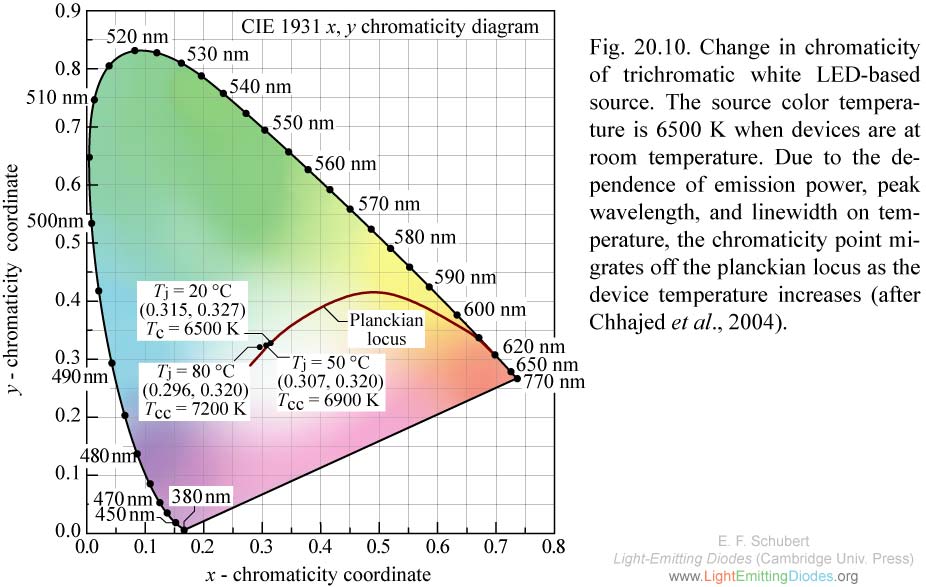
|
Fig. 20.10. Change in chromaticity of trichromatic white LED-based source. The source color temperature is 6500 K when devices are at room temperature (after Chhajed et al., 2004).
|
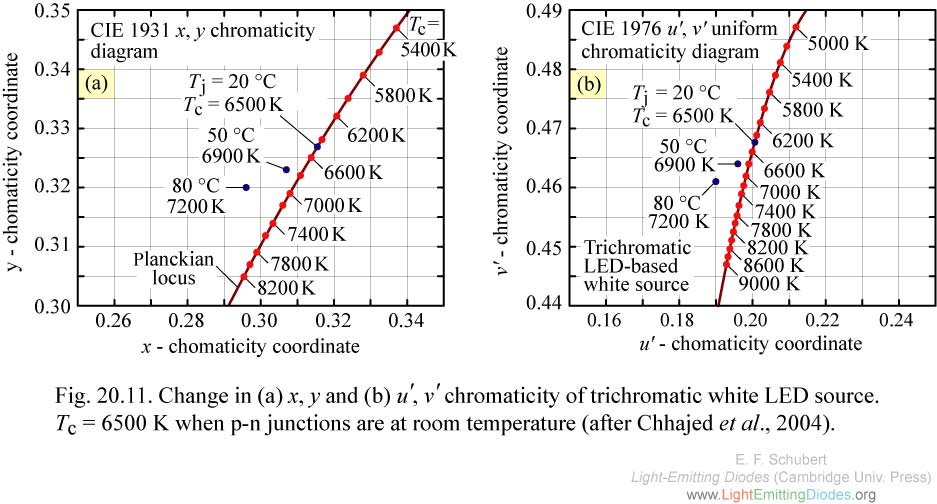
|
Fig. 20.11. Change in (a) x, y and (b) u', v' chromaticity of trichromatic white LED source. Tc = 6500 K when p-n junctions are at room temperature (after Chhajed et al., 2004).
|










